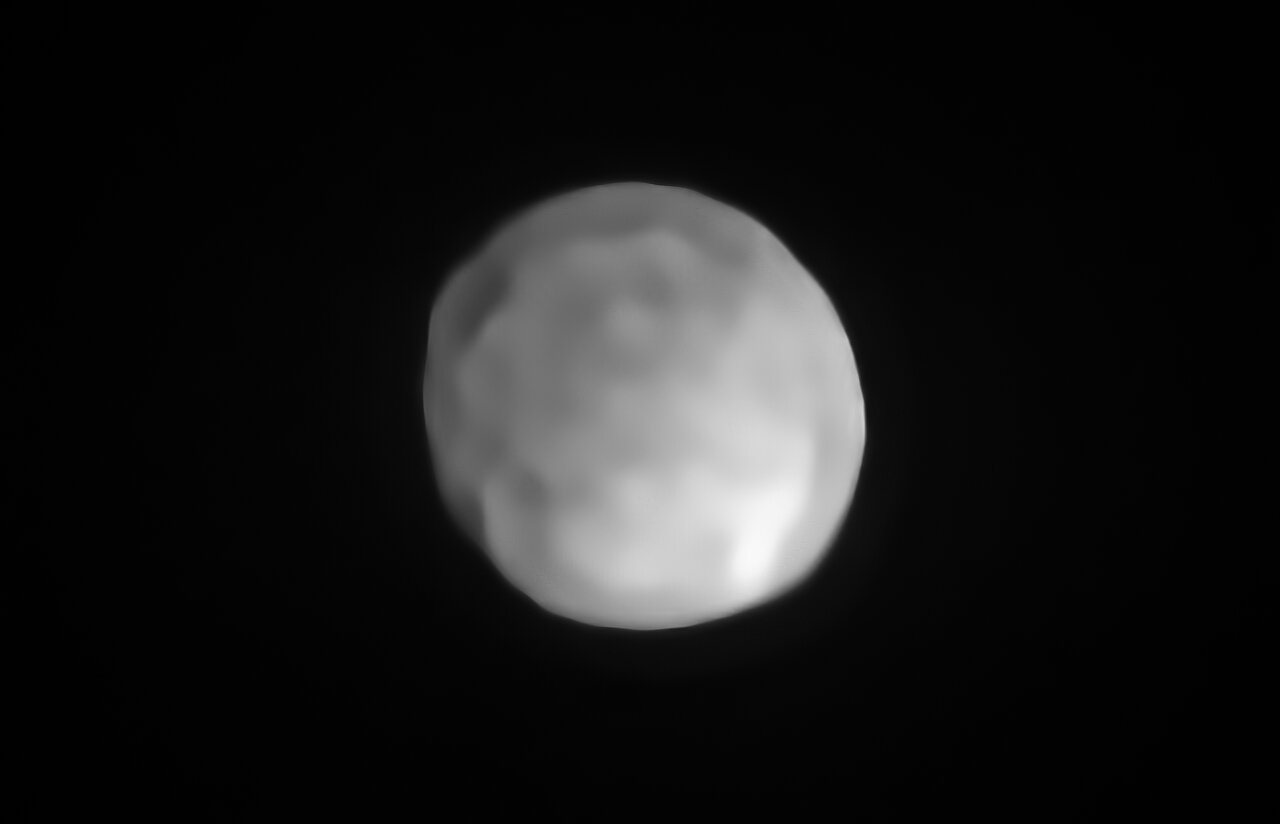
Out in the asteroid belt between Mars and Jupiter, numerous small bodies orbit around our sun. While most of these objects are asteroids, only one of them, Ceres, was considered a dwarf planet at 950 km (590 miles) in diameter. But now, astronomers from the European Space Agency have looked more closely at one of Ceres’ little brothers, Hygiea, and determined that it may be our solar system’s smallest dwarf planet at just 430 km (267 miles) in diameter.
The defining criterion for Hygiea to be a dwarf planet rather than an asteroid is that it needs enough mass for gravity to pull it into a spherical shape. And as you can see in the image above, Hygiea does meet that requirement.
“Thanks to the unique capability of the SPHERE instrument on the VLT [Very Large Telescope], which is one of the most powerful imaging systems in the world, we could resolve Hygiea’s shape, which turns out to be nearly spherical,” lead researcher Pierre Vernazza from the Laboratoire d’Astrophysique de Marseille in France said in a statement. “Thanks to these images, Hygiea may be reclassified as a dwarf planet, so far the smallest in the Solar System.”
The classification of Hygiea has also reignited debate about the status of the solar system’s most famous dwarf planet, Pluto, which is 2400 km (1491 miles) in diameter. Pluto was downgraded from its official planet status to a dwarf planet in 2006, in a move that many people still vehemently disagree with.
At the International Astronautical Congress recently, NASA Administrator Jim Bridenstine humorously took issue with the classifications used to differentiate between planets and dwarf planets. He pointed out that Pluto has an ocean under its surface, has complex organic compounds on it, and has its own moons, which sounds like a planet to most people.
One criterion for whether a body is a full planet rather than a dwarf planet is that it must “clear the neighborhood around its orbit,” meaning that it must be the gravitationally dominant object in its orbital zone. This is the criterion that Pluto fails to meet, because it has many asteroids and other objects in its orbital zone. However, according to prominent scientist Alan Stern, Earth, Mars, Jupiter, and Neptune have also not cleared their orbits. “If Neptune had cleared its zone, Pluto wouldn’t be there,” he said at the time.
Regardless of how we classify them, we are likely to find more small bodies which form part of our solar system as telescopes and imaging technologies continue to evolve. “Thanks to the VLT and the new generation adaptive-optics instrument SPHERE, we are now imaging main belt asteroids with unprecedented resolution, closing the gap between Earth-based and interplanetary mission observations,” Vernazza said.



